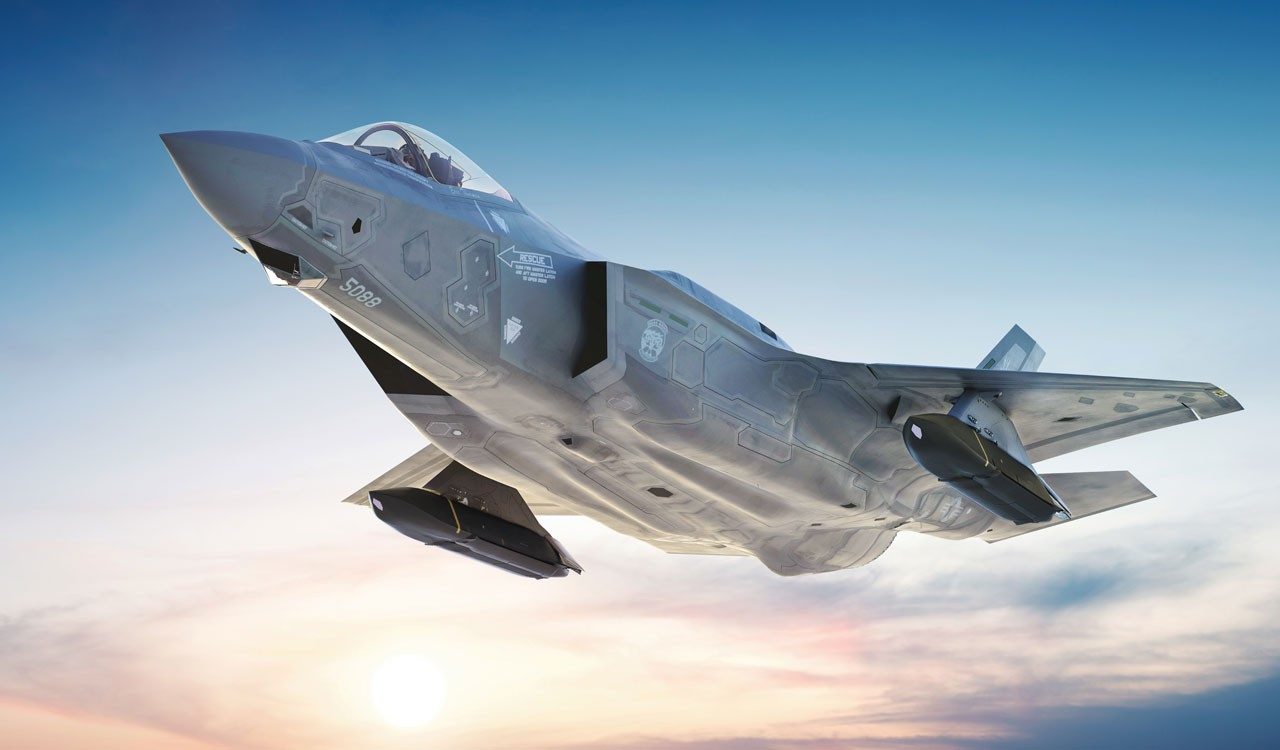SOURCE: AFI


The Lockheed Martin F-35 Lightning II, a cornerstone of fifth-generation fighter technology, is facing an uncertain future in the export market as several countries reconsider their orders. A combination of factors—chiefly the U.S. administration’s aggressive tariff policies under President Donald Trump, alongside doubts about reliability and shifting geopolitical priorities—has prompted nations to scale back or cancel their commitments.
This development presents a unique window for India, which has yet to commit to the F-35, to potentially acquire these advanced jets originally earmarked for export. With the U.S. Air Force (USAF) unlikely to absorb export-specific variants, India could bolster its airpower while capitalizing on a disrupted supply chain. But which countries are pulling back, how many aircraft are affected, and should India seize this moment?
Several nations, either prospective buyers or existing customers, are reportedly reevaluating their F-35 commitments, driven by the fallout from U.S. tariffs imposed in early 2025 and broader concerns over dependency on American defense systems. Based on current sentiment and emerging reports, the following countries are among those planning or considering cancellations:
Canada committed to purchasing 88 F-35A jets in a $19 billion deal finalized in 2023, with deliveries slated to begin in 2026. However, Trump’s imposition of a 25% tariff on Canadian goods in February 2025, citing border security and drug trafficking concerns, has strained bilateral ties. Canadian officials, including Prime Minister Justin Trudeau, have hinted at retaliatory measures, including rethinking defense procurements like the F-35. Analysts estimate Canada could cancel or reduce its order by at least 50%, potentially freeing up 44 aircraft.
Portugal had been exploring the acquisition of up to 24 F-35As to replace its aging F-16 fleet, with plans still in the preliminary stage. However, recent developments suggest Lisbon has abandoned this ambition. The U.S.’s tariff threats and Trump’s erratic NATO rhetoric have pushed Portugal toward European alternatives like the Eurofighter Typhoon or Dassault Rafale, scrapping its tentative order entirely.
Turkey, once a partner in the F-35 program, ordered 100 F-35As before being expelled in 2019 over its purchase of Russia’s S-400 system. While Ankara has expressed interest in rejoining, the current U.S. administration’s hardline stance and tariff disputes have dashed hopes of reconciliation. Turkey’s original order of 100 jets remains canceled, though these were already reassigned years ago. Recent tensions suggest no revival is imminent.
Germany ordered 35 F-35As in 2022 to replace its Tornado fleet, with deliveries scheduled from 2027. However, Trump’s threats to impose 25% tariffs on European Union goods, announced in February 2025, have sparked calls in Berlin to prioritize European sovereignty. Defense analysts speculate Germany could cut its order by half (18 aircraft) or cancel it outright in favor of the Future Combat Air System (FCAS), a Franco-German-Spanish initiative.
Switzerland committed to 36 F-35As in 2021, with deliveries set for 2027-2030. Public and political pressure to cancel has surged amid U.S. unreliability concerns and tariff disputes. A potential referendum to ditch the F-35 for a European option like the Rafale is gaining traction, threatening the entire order of 36 jets.
The F-35 program has a robust production pipeline, with Lockheed Martin delivering over 1,100 aircraft worldwide by March 2025 and orders stretching into the 2030s. For export markets, particularly the countries reconsidering their commitments, the following numbers reflect aircraft either in production or planned:
Canada: 88 ordered, with 44 potentially at risk of cancellation. Production of the first batch (16 jets) began in 2024, meaning at least 10-15 could already be in assembly.
Portugal: Up to 24 tentatively planned, none in production yet, but their cancellation frees up future slots.
Germany: 35 ordered, with initial production starting in 2025 for delivery from 2027. If halved or canceled, 18-35 jets could be affected.
Switzerland: 36 ordered, with production slated to ramp up in 2026. A full cancellation would release all 36.
Turkey: 100 originally ordered, already canceled and reassigned, so no immediate production impact.
Roughly 60-100 F-35s tied to these nations are either in early production or scheduled through 2030. These are export-specific F-35A variants, tailored to foreign specifications (e.g., software, weapons integration), which the USAF would not procure as they diverge from its own requirements. Lockheed Martin’s Fort Worth facility produces about 150 F-35s annually, with 40-50% typically destined for export, meaning a significant surplus could emerge if cancellations mount.
India, which has historically relied on a mix of Russian, French, and indigenous aircraft, has not yet joined the F-35 program, partly due to its close ties with Russia and the U.S.’s reluctance to share sensitive technology with a non-treaty ally. However, the current situation offers compelling reasons for New Delhi to act.
Yet, challenges abound. India’s $100 million per jet budget constraint, its commitment to the indigenous AMCA program, and potential U.S. export restrictions (given India’s S-400 ownership) could complicate a deal. The F-35’s high operating costs—around $44,000 per flight hour—might also strain the IAF’s resources compared to cheaper alternatives like the Rafale, of which India already operates 36.
NOTE: AFI is a proud outsourced content creator partner of IDRW.ORG. All content created by AFI is the sole property of AFI and is protected by copyright. AFI takes copyright infringement seriously and will pursue all legal options available to protect its content.